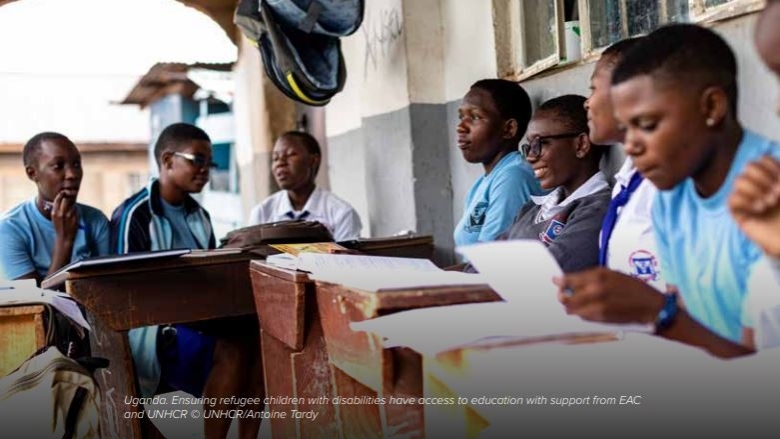The average annual cost of educating refugees is less than 5 percent of public education expenditure in developing nations hosting 85 percent of the world’s refugees, according to a joint World Bank – UNHCR report released today.
The principle of inclusive education, in this case, opening education up to all refugee children and their inclusion into national education systems can also lead to better services for local communities in host countries. This can be achieved at an estimated annual cost of US$4.85 billion globally. This is a pre-COVID estimated cost of educating all refugees and is likely to increase as the impacts of the pandemic continue to unfold.
The Global Cost of Inclusive Refugee Education report provides a standardized methodology to estimate refugee education costs across all host countries. It hopes to catalyze the development of country-level costed refugee-inclusive education plans.
At mid-2020 the number of forcibly displaced people globally surpassed the 80 million mark, accounting for one percent of the global population. Among them were 26 million refugees, half of whom are below the age of 18. Many of these children live in protracted crises. They often spend long periods, if not the entirety of their schooling years, in displacement. Educating them is of paramount importance to their future and self-sufficiency.
The report provides a “what it would take” figure rather than international commitments and obligations or current domestic expenditure on refugee education. Challenges remain in funding refugee education adequately, sustainably, and in a coordinated manner. There is an urgent need to improve the coordination of education financing in fragile and conflict-affected situations.
Funding is not the only condition for universal access and completion of education. While the report is focused on estimating the cost of access to education for refugee children, the importance of improving the quality of education cannot be ignored. The eradication of learning poverty, that is, being unable to read and understand a simple text by age 10, applies to host country populations and refugee children alike.
